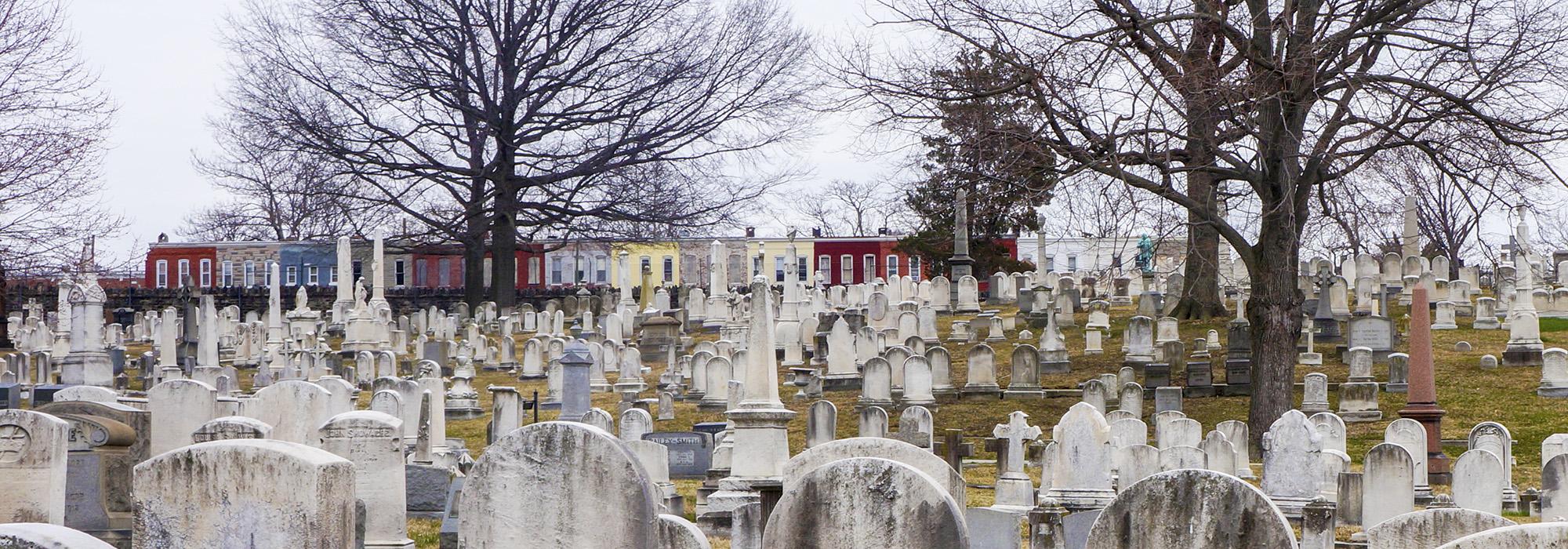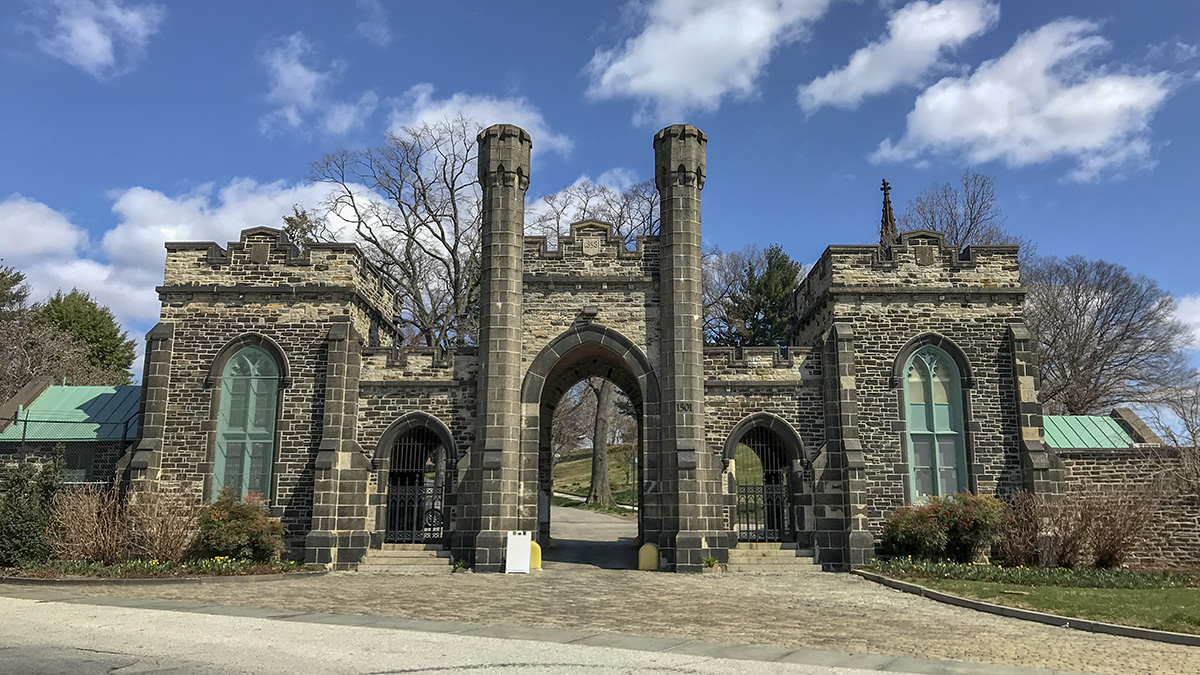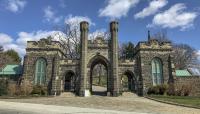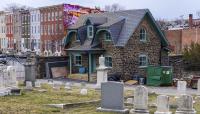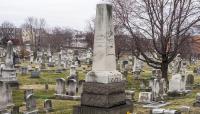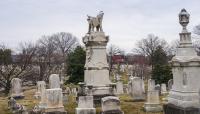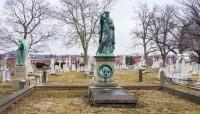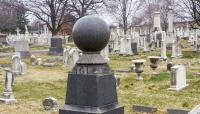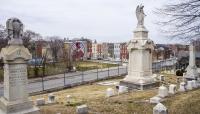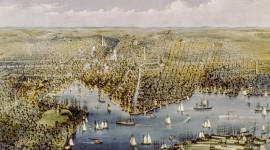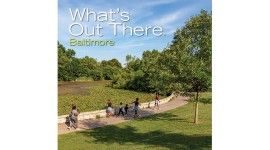Landscape Information
Occupying 68 acres of hilly terrain to the north of downtown Baltimore, the cemetery was established by the General Assembly of Maryland on March 15, 1838 and was dedicated on July 13, 1839. Inspired by a visit to Mount Auburn Cemetery in Cambridge, Massachusetts, tobacco merchant Samuel Walker led the efforts to build the city’s first rural cemetery. The site was formerly the estate of Robert Oliver, another local merchant. Benjamin H. Latrobe, Jr., laid out the grounds, which consist of grassy hillsides scattered with large canopy trees and a series of curving cobblestone paths. The pathways were varied in width to accommodate both carriage and pedestrian traffic, also demarcating the irregular, curved sections of burial plots.
The cemetery is entered near the southwest corner via a Gothic-style gatehouse with twin towers and stained-glass windows, designed by Robert Cary Long, Jr. Views from the gatehouse include the main façade of a Gothic-style chapel designed by Riggin Buckler and G. Corner Fenhagen. Surrounded on all four sides by a low brick wall topped by a chain-link fence, the cemetery also contains a wide variety of memorial sculptures, including those by William Henry Rinehart and Hans Schuler. Numerous notable persons are interred with the cemetery, from the famous to the infamous.
Still active 140 years after its dedication, the site includes more than 65,000 graves and remains a peaceful, sylvan reprieve, affording borrowed views of the surrounding row houses. Green Mount Cemetery was listed in the National Register of Historic Places in 1980.



